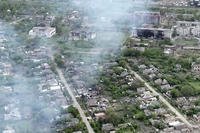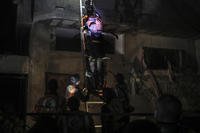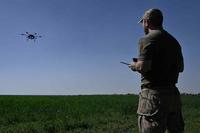
The most difficult weapons decision by the new administration that enters the White House next January will likely be the fighter issue -- how many and what kinds of fighters should be procured for the U.S. Air Force, Navy, and Marine Corps.
The George W. Bush administration--with Secretaries of Defense Donald H. Rumsfeld and Robert M. Gates -- has mapped out a fighter procurement strategy. Particularly controversial was the decision to produce only 183 to 187 F-22 Raptor advanced fighters for the Air Force. But many Air Force leaders believe that the service needs as many as 381 F-22s to bridge a "fighter gap" until the F-35 Joint Strike Fighter (JSF) becomes available in numbers. The recent problems with the F-15 Eagle have provided ammunition for the advocacy of more F-22s in the near term.
Meanwhile, some Navy officials are becoming concerned about a "fighter gap" in that service. Their solution would be to increase the current procurement of F/A-18E and F Super Hornet aircraft. These strike-fighters would be for Navy service as the Marine Corps has kept with older F/A-18s and does not fly the E/F models.
All three services plan to acquire specific variants of the F-35 JSF -- officially named Lightning II, a moniker that is rarely used. But what impact would additional buys of F-22s or F/A-18s have on the F-35 program? Air Force Major General Charles R. Davis, the F-35 program executive officer, was recently quoted in Defense News (7 April 2008) stating, "Any time there is a discussion of a service or country pulling out airplanes from the program, the other service leaderships get very concerned. But we have told the Navy that buying them [F-35C aircraft] sooner at greater rates gives you a lower cost and more capability on your [carrier] decks than any other buying profile."
In realty, the Air Force has the least interest in near-term procurement of the F-35 JSF as it would take several years to buy up to an F-22 force of 381 aircraft. Similarly, the Navy is pleased with the F/A-18 Super Hornet for the next decade or more. That aircraft has both a fighter and attack capability, and the nature of expected air threats -- both in terms of quantity and quality -- should be effectively countered by the Super Hornets. Also, an "all F/A-18 Super Hornet force" -- including the new A-18G Growler electronic attack aircraft -- simplifies maintenance and training.
More critical is the U.S. Marine Corps situation. The Marines now fly the F/A-18C and D variants and, of course, the AV-8B Harrier STOVL aircraft. Both will be in need of replacement within a decade and the F-35B STOVL is the planned -- and needed -- replacement. STOVL aircraft can operate from the Navy's large carriers as well as the so-called amphibious assault ships (LHA/LHD), which are "flattops" as large as World War II-era fleet carriers but lack catapults, arresting gear, and angled flight decks.
Similarly, the Britain is planning procurement of the F-35B to succeed the less-capable Harriers flown from their carrier decks (by Royal Navy and Royal Marine pilots).
In the long-term, the U.S. Air Force has discussed buying about a thousand F-35A and possibly other JSF variants to replace all of its F-15/F-16/A-10 aircraft.
Thus, there are major fighter issues to be addressed when the new administration is sworn in next January. Because of aircraft production line and component concerns, some decisions will have to be made quickly. Still, an objective, all-service study of U.S. fighter requirements and options should be conducted as soon as possible by the new administration -- preferably during the November -- January transition period.
-- Norman Polmar








